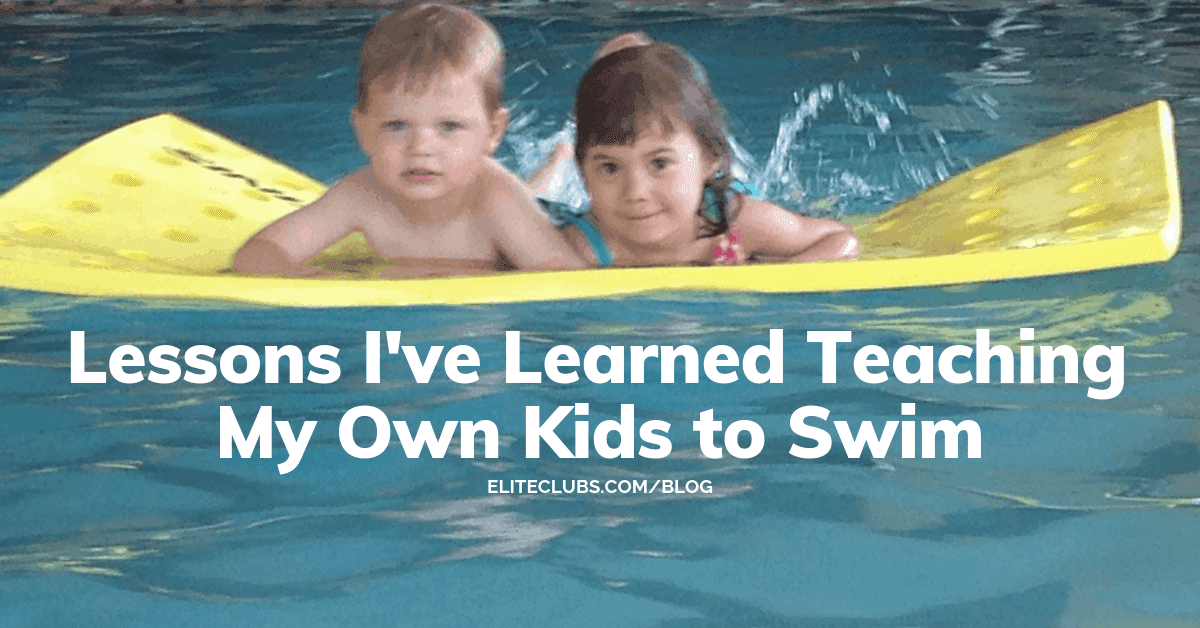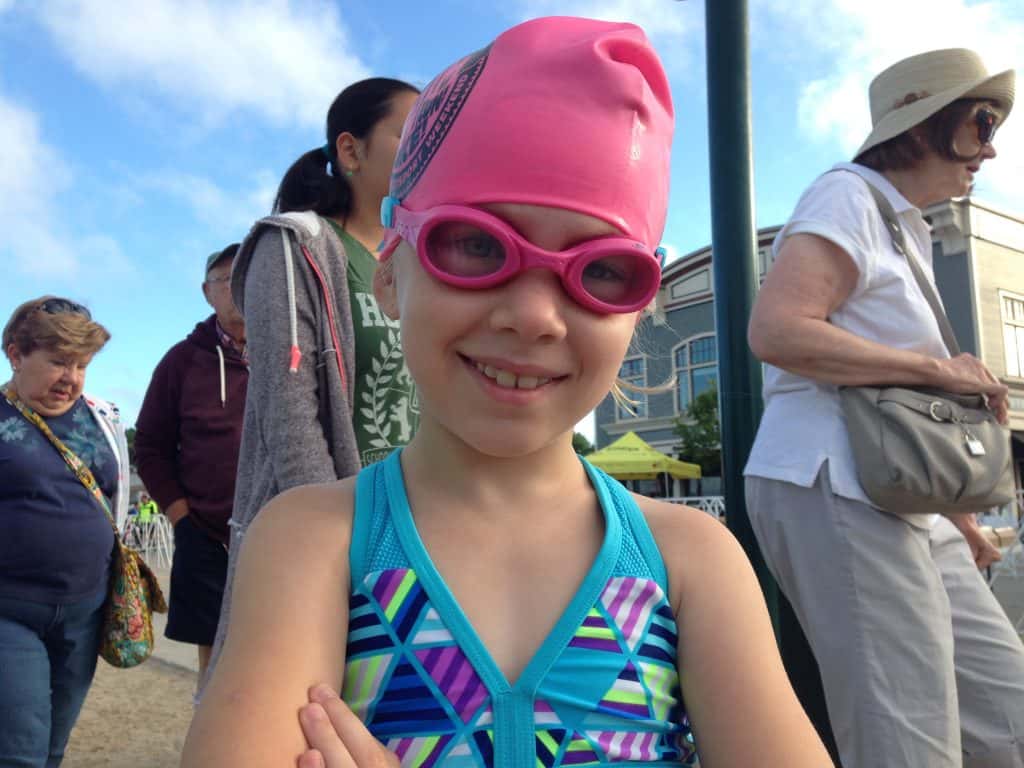
The swim instructor in me knows that swimming is a life skill children need to learn. The mom in me knows that both sets of my children’s grandparents live on lakes, and that our family’s outdoor-loving lifestyle keeps us near water a lot. The athlete in me wants my children to embrace exercise as part of a healthy lifestyle. Many people have approached me and said, “Your own children must swim like fish.” Yet, at times throughout the past ten years, like many other parents, I have had some challenges teaching my own kids to swim.
Tips for Parents Teaching Their Kids to Swim
These might sound familiar to some parents. I’ve heard my own children at the pool saying:
“I DON’T WANT TO!”
“I CAN’T DO THAT!”
“I’M SCARED!”

This has occasionally lead to a slight battle between myself and my daughters to get them to swim well at an early age. For both of them, what ended up working out in the end was taking a more relaxed approach, and practicing what I preached to my own swim lessons students. These are things I’ve learned along the journey:
- Swim often. The kids I see at the pool that learn to swim the fastest are the ones whose parents are bringing them to swim during family swim time on a regular basis, usually weekly. With my first child, I was diligent about doing this, and she picked skills up fairly quickly. When my second child came around, due to our family life becoming busier, we weren’t as regular about swimming just for fun, and her skills were coming at a very slow rate. About six months ago, I purposely set aside time in our schedule for her to swim for fun on a weekly basis, and her skills have improved immensely since then.
- It’s okay to take time off. When skills start to plateau, it might not be more practice or lesson time that they need. Their bodies just might need time to grow. Both of my kids had to take a year off of lessons because the skill levels they were at required more muscle and physical development than they were ready for, and the lack of progress was frustrating for both them and me. When we came back to it a year later, they were able to move ahead much more quickly.
- Peer pressure works sometimes. Both of my children occasionally have had either semi-private or group lessons with a friend or two, and there seems to be much less hesitation about trying a new skill when a friend is involved.
- Let them set the schedule. When I talked about setting up this school year’s swim lessons with my youngest, she said, “I’d like to do a one week on, one week off, one week on pattern. I think every week would be too much for me.” So, that’s what we did, and she’s improved immensely in that time. We use the off weeks to just swim for fun. My older daughter likes to do activities one at a time for an intense 2-3 months, then move on to a different activity. By asking them to help set up their activity schedules, we’ve hit a happier balance as a family.
- Healthy activities aren’t always about being on organized sports teams. My kids aren’t into competitive sports, and I’m okay with that. They aren’t couch potatoes, either. The two of them have struck a healthy balance of being active, and swimming for fun, doing laps occasionally, and even doing a kids’ triathlon every summer, as a part of that lifestyle.
As parents, we have to find ways to build our children’s confidence and push them out of their comfort zone. From what I’ve experienced with my own, though, working with them has achieved much more than working against them. If you have any questions about your child’s progress in swimming, please talk to one of our aquatics directors. They will help you come up with a swim instruction plan that works for your child and your family.
Sign Up for Swim Lessons!
Written by Jessica Heller, Aquatics Director at Elite Sports Club-Mequon
Jessica Heller has a B.S. in Biological Sciences, minor in Spanish (UW-Milwaukee, 1999), Doctor of Chiropractic (Northwestern Health Sciences University, 2002), and post-graduate continuing education focused mostly on rehabilitative exercise, sports injuries, and nutrition. She is a certified Water Safety Instructor (since 1996), Lifeguard/CPR/First Aid Instructor (since 2010), Red Cross Babysitting Instructor (since 2015), Certified Pool Operator (since 2013), Certified Strength and Conditioning Specialist (since 2006), Aquatic Exercise Association Aquatic Fitness Professional (since 2008), and Arthritis Foundation Aquatics Program Instructor (since 2011).